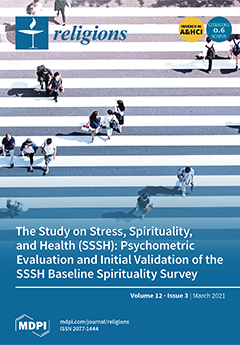This article makes the case that Vīraśaivism emerged in direct textual continuity with the tantric traditions of the Śaiva Age. In academic practice up through the present day, the study of Śaivism, through Sanskrit sources, and
bhakti Hinduism, through the vernacular, are generally
[...] Read more.
This article makes the case that Vīraśaivism emerged in direct textual continuity with the tantric traditions of the Śaiva Age. In academic practice up through the present day, the study of Śaivism, through Sanskrit sources, and
bhakti Hinduism, through the vernacular, are generally treated as distinct disciplines and objects of study. As a result, Vīraśaivism has yet to be systematically approached through a philological analysis of its precursors from earlier Śaiva traditions. With this aim in mind, I begin by documenting for the first time that a thirteenth-century Sanskrit work of what I have called the Vīramāheśvara textual corpus, the
Somanāthabhāṣya or
Vīramāheśvarācārasāroddhārabhāṣya, was most likely authored by Pālkurikĕ Somanātha, best known for his vernacular Telugu Vīraśaiva literature. Second, I outline the indebtedness of the early Sanskrit and Telugu Vīramāheśvara corpus to a popular work of early lay Śaivism, the
Śivadharmaśāstra, with particular attention to the concepts of the
jaṅgama and the
iṣṭaliṅga. That the Vīramāheśvaras borrowed many of their formative concepts and practices directly from the
Śivadharmaśāstra and other works of the Śaiva Age, I argue, belies the common assumption that Vīraśaivism originated as a social and religious revolution.
Full article





